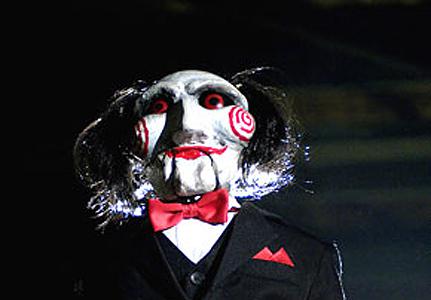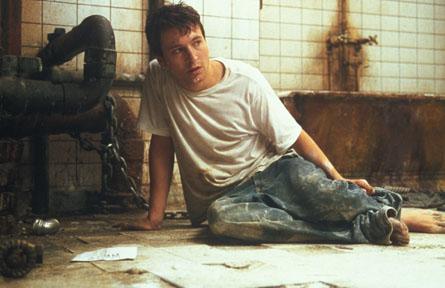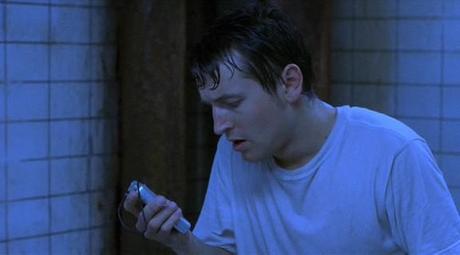Saw is a busy film.
The image is frenetic and the soundtrack syncs with lots of noise, loud music and jolting cues. It aims to disturb your senses and scare you via over stimulation. But, there is one two minute scene that I always recall for its simplicity.

When the character of Adam remembers his kidnapping the sound is simplified to isolate the situation and develop tension organically. He awakens disoriented in his darkroom. None of the lights work. He hears something in his apartment provoking investigation. After testing his flash light and finding it does not work he chooses his camera’s flash to illuminate the space.

Adam
As he moves through his apartment taking photos, the flash has to charge. The charging becomes the primary source of sound and as a result becomes the primary device for creating tension. There is the sound of the flash itself, some low level ambiance providing background to an apartment in the city and as Adam walks there is the creaking of old wood floors, but this is all secondary to the ever present charging of the flash and its promise waiting in the darkness.
This is effective. We have a limited view point to the events at hand and by isolating the sound it allows us to forget we are audience to a movie and fall into the environment of the scene: glimmers of light followed by the buzzing of a charge. The sequence works against the grotesqueries of the rest of the film and is elevated beyond the gimmick by exhibiting awareness for what is necessary and tapping into our innate fears of something looming in the dark.

Broken only when the doll laughs at us, it brings us out of the moment, reminding us of the movie we are watching. The doll illuminates Jigsaw so he can perform his deed as the film continues with the remaining horrors of the narrative.

